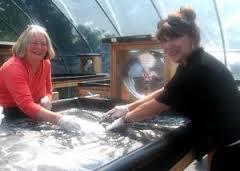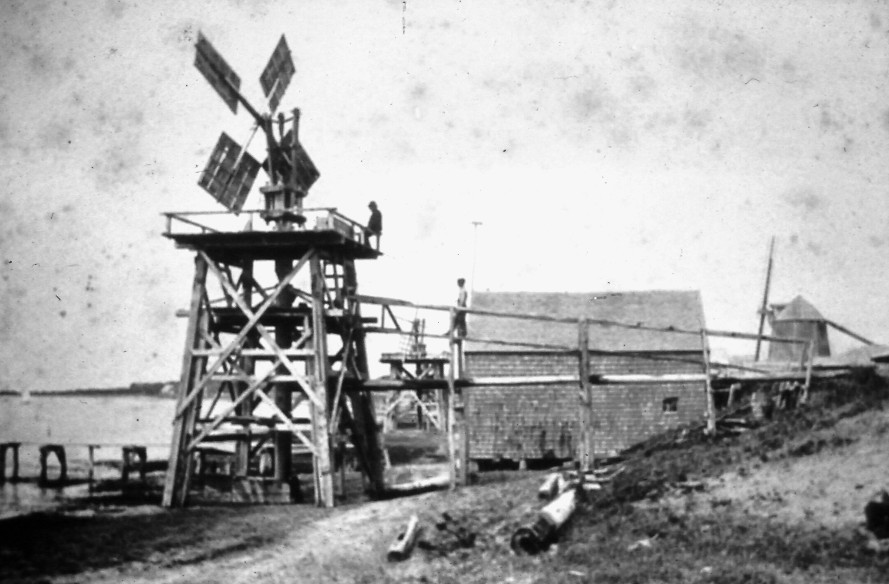
Not Everything made in a greenhouse is plant related.
We may all brainstorm for great business ideas from time to time, but how many of us actually make one of them a reality? Penny Lewis and Jan Burling –friends for over 35 years from Cape Cod, Massachusetts were having lunch together when they thought of making sea salt—Penny was inspired by such operations she’d seen when she visited Peru. The two began experimenting in a sixteen-foot backyard greenhouse. They carried five-gallon buckets from the beach to their truck—by hand—and then to a shallow, plastic-lined trough at the greenhouse base. As it has for humans for nearly 7000 years, solar evaporation did the rest.
In the nineteenth century, Cape Cod, Massachusetts had been an important center of salt production. Like so many commodities essential to the early colonists, salt was imported by British merchants and availability and consumption were tightly controlled. The imported salt was cheap, and local efforts to produce salt were expensive, relying as they did upon boiling big pots of seawater over wood fires. The cost of wood alone was prohibitive—or was until the Revolution began, and the supply of cheap salt ended. The absence of salt was a dire situation for the colonists. Without salt to preserve their food—most notably, salt cod, the major industry– they faced starvation.
John Sears, a Cape Cod native, created the first open-air vat to evaporate seawater in 1777. He even plundered a bilge pump from a shipwrecked British boat to move water into the vat. Additional tinkering, the addition of a windmill for pumping, and roof above, resulted in the first Cape saltworks. Even after the Revolution, the British embargo continued– keeping the price of Cape Cod salt high. This prompted the construction of saltworks all along the Cape coastline. They became so numerous and so important that British naval vessels threatened to destroy them during the War of 1812. But new sources of salt developed in Onandaga County, New York, where springs provided salt more cheaply than the ocean. By the late 1800’s, Cape Cod salt production had ended, the saltworks were destroyed, and soon few remembered their existence.
That is, until 2011, when the tradition was revived by the Cape Cod Saltworks. Jan and Penny’s current production house is large, and boasts double rows of evaporation tables. Solar power doesn’t just evaporate the sea water, it also powers the fans and roof vent of this impressive set-up. At season’s peak, tables are filled with seawater and salt is harvested in cycles of one to two days.
Then it’s packed into jars and goes out into the world.

Article copyright by Alice McGowan written for http://www.hartley-greenhouses.com










